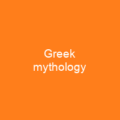Dragons: The Mythical Creatures That Have Captivated Human Imagination
Dragons have long been a source of fascination and awe for people across the globe. These legendary creatures, with their scales, wings, and often fiery breath, have woven themselves into the fabric of human culture in countless ways. From ancient myths to modern literature, dragons continue to captivate our imaginations.
Origins and Variations
Have you ever wondered where these magnificent creatures came from? The idea of a dragon has roots that stretch back thousands of years, with early reports often resembling giant snakes. In ancient Mesopotamia, Egypt, Greece, Norse mythology, and Aztec culture, dragons were depicted in various forms—some winged, some serpentine, and others as fierce protectors or malevolent beings.
Take Apep, the giant serpentine creature from Egyptian mythology. This monstrous being was said to reside in the Duat, the Underworld, and his roar could cause thunderstorms and earthquakes. In other cultures, dragons were often found in dark caves, deep pools, wild mountain reaches, sea bottoms, or haunted forests—places that early human ancestors would have considered dangerous.
The Symbolism of Dragons
Dragons have served as symbols for various concepts throughout history. For instance, the ouroboros—a serpent swallowing its own tail—was a well-known Egyptian symbol representing eternal cycles and rebirth. In medieval alchemy, dragons took on new forms, often depicted with wings, legs, and tails.
One of the most famous depictions is found in the eleventh-century Codex Marcianus, where a dragon gnaws on its own tail. This image became a common motif in works on alchemy, symbolizing the cyclical nature of transformation and renewal.
Dragons in Different Cultures
The concept of dragons varies widely across different cultures. In Western traditions, dragons are often depicted as winged, horned creatures capable of breathing fire. Meanwhile, Eastern dragons are typically portrayed as wingless, four-legged serpents with above-average intelligence.
In Chinese mythology, dragons are associated with power over rain and are believed to control droughts by their laziness. They are also seen as symbols of good fortune and are often depicted as the personal mounts or companions of many East Asian deities. The Chinese dragon is the highest-ranking creature in the animal hierarchy and its origins date back to Neolithic pottery and Bronze Age ritual vessels.
In Korean myths, dragons are benevolent beings associated with water and agriculture, often living in rivers, lakes, oceans, or deep mountain ponds. They are said to have 81 scales on their backs, representing yang essence. In Japanese folklore, dragons are typically depicted as large, wingless serpents with three claws, associated with rainfall and bodies of water.
Dragons also play significant roles in Indian mythology, where they are often linked to the gods and goddesses. The Druk (Thunder Dragon) is Bhutan’s national symbol, adopted by the Drukpa Lineage as a powerful emblem of protection and wisdom.
The Legend of Saint George and the Dragon
One of the most famous stories involving dragons is that of Saint George and the Dragon. This legend may have originated in the sixth century AD but gained popularity during the eleventh century, with the first full account coming from an eleventh-century Georgian text.
The story goes that a dragon kept pillaging the sheep of the town of Silene in Libya. The townspeople offered sacrifices to appease it, but when their offerings ran out, they began sacrificing young maidens. Saint George, upon hearing about this, rode into town and killed the dragon with his sword. This tale has been retold countless times and is celebrated in various forms across different cultures.
Dragons in Modern Literature
Dragons have become a staple of modern literature, particularly within the fantasy genre. From J.R.R. Tolkien’s The Hobbit to J.K. Rowling’s Harry Potter series, these mythical creatures continue to captivate readers and inspire new generations of writers.
In works like Anne McCaffrey’s Dragonriders of Pern or Ursula K. Le Guin’s Earthsea Cycle, dragons are not just passive elements but active participants in the narrative, often serving as powerful allies or formidable foes. These stories have helped to cement the dragon as a symbol of fantasy and adventure.
Conclusion
Dragons, with their rich history and diverse representations across cultures, continue to be a source of endless fascination. From ancient myths to modern literature, these legendary creatures remind us of our enduring connection to the fantastical and the magical. Whether you see them as symbols of power or simply as awe-inspiring beings, dragons will undoubtedly continue to capture our imaginations for generations to come.

You want to know more about Dragon?
This page is based on the article Dragon published in Wikipedia (retrieved on March 12, 2025) and was automatically summarized using artificial intelligence.







